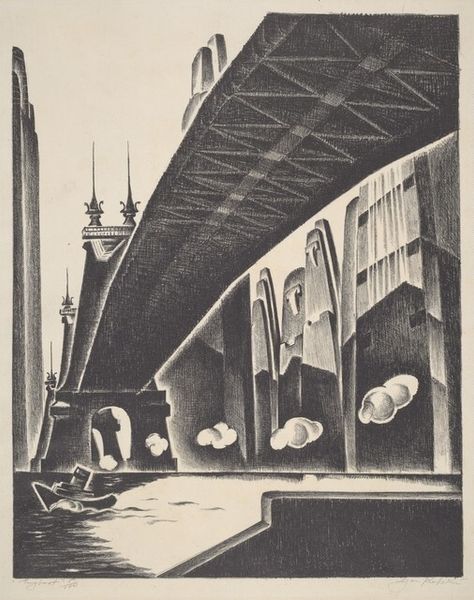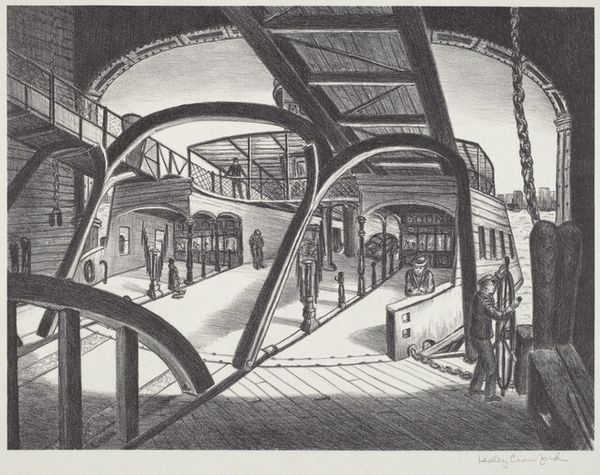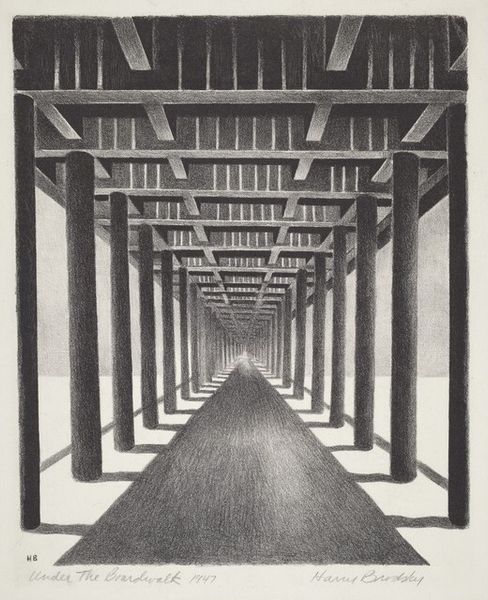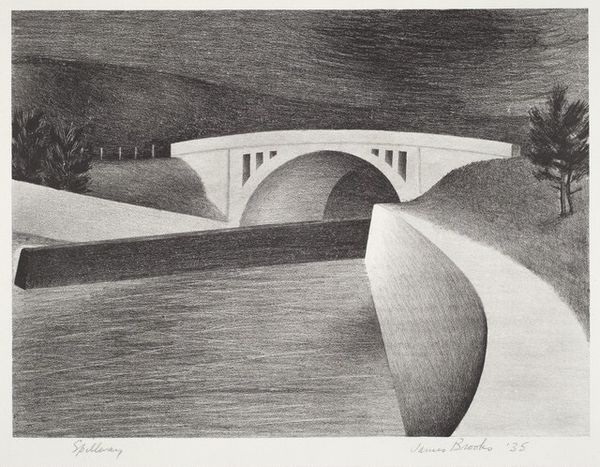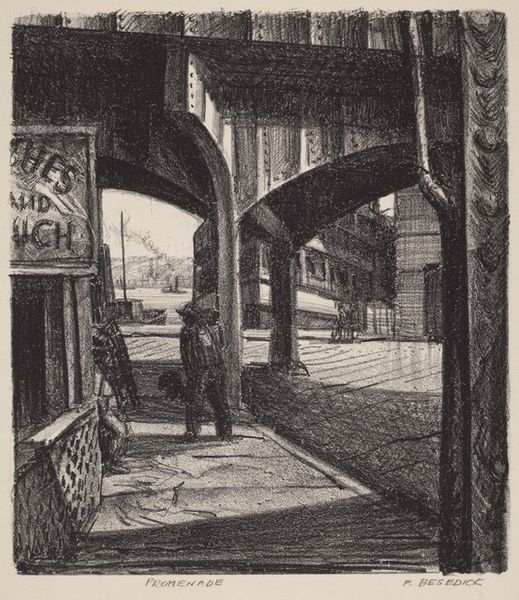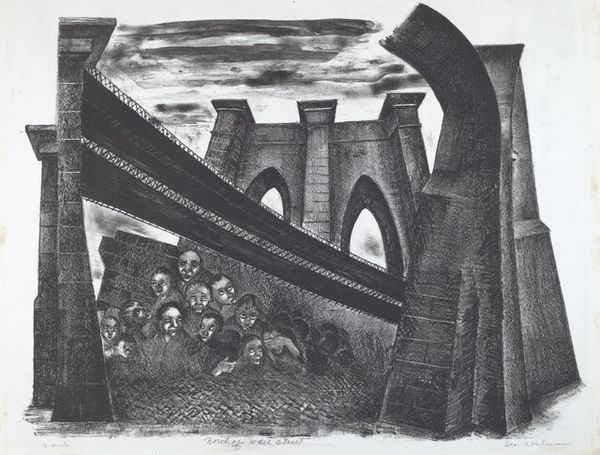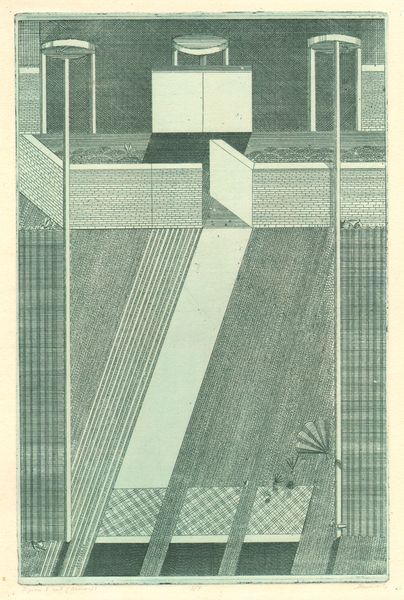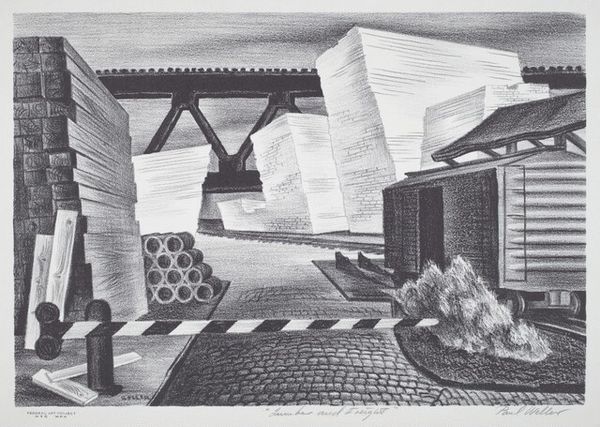
drawing, print, graphite
#
precisionism
#
drawing
# print
#
pencil drawing
#
geometric
#
graphite
#
cityscape
#
graphite
#
realism
Dimensions: image: 365 x 279 mm sheet: 477 x 369 mm
Copyright: National Gallery of Art: CC0 1.0
Curator: Otis Oldfield's "Bay Bridge Series," likely from around 1936, uses graphite on paper to present an unexpected view of urban infrastructure. Editor: Whoa, this gives me that 'vast yet confined' feeling. The crisscrossing lines and colossal pillars create such a contrast. There's the bridge way off in the distance, almost dreamlike. Curator: Oldfield often focused on cityscapes, particularly in the Bay Area. We should consider the cultural context: The Bay Bridge, an emblem of progress, finished construction around the time of this drawing. But the viewpoint chosen is not the soaring vista that one expects from an image showcasing modernity. Editor: Exactly! He’s got us down in the dirt, looking up. Sort of undermines the triumphal vibe, doesn't it? The realism mixed with that slightly unsettling perspective is captivating. Is it supposed to make me feel insignificant, or empowered by witnessing hidden grandeur? Both? Curator: That tension is precisely what makes this drawing compelling. Consider how Oldfield’s artistic choices – the precisionist lines, the stark contrast between light and shadow – present the bridge not as a symbol of overcoming nature but rather enmeshed with it. The rough, textured ground anchors the piece, reminding us of the physical labor involved in such grand projects. It grounds this icon of industrialization. Editor: There's something haunting about this. It's more than just an architectural study. It's a meditation on scale, ambition, and maybe a little dose of human insignificance served with a side of awe. Curator: A crucial question, then, is: Why select this perspective? Instead of showcasing human triumph, Oldfield might be suggesting a more ambivalent relationship between humanity and our built environment. This composition raises profound questions about public works. Editor: Leaving us not with a celebration but rather with lingering questions about how we, as beings rooted in the soil, can comprehend, navigate and shape such monstrous geometries. Makes you think, doesn’t it? Curator: Indeed. I am still chewing over that point.
Comments
No comments
Be the first to comment and join the conversation on the ultimate creative platform.

